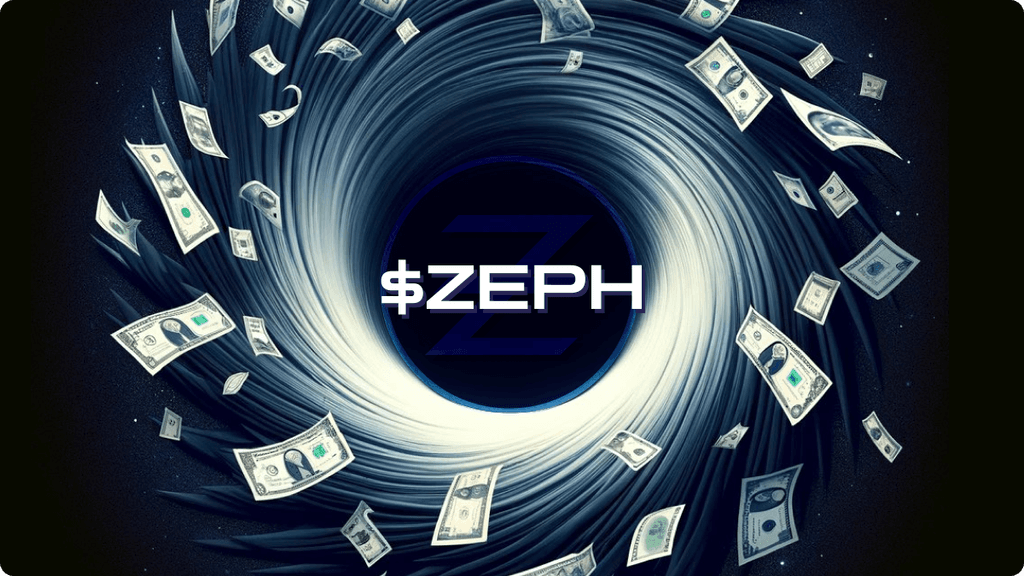Introduction: The Significance of Zephyr Protocol
Zephyr Protocol presents a groundbreaking advancement in the cryptocurrency sector by harmoniously blending the stability of Djed’s stablecoin framework with the confidentiality of Monero’s privacy features. Functioning as an autonomous financial institution, Zephyr facilitates the buying and selling of stablecoins within a designated price range, tethered to a target price. This innovative approach effectively addresses the pivotal challenges in the crypto world: preserving value stability and ensuring transactional privacy.
The Architecture and Innovations of Zephyr Protocol
Zephyr’s Unique Triple Asset Model
At the core of Zephyr Protocol lies a trio of assets: ZEPH, ZephUSD, and ZephRSV. ZEPH, as the base currency, underpins the ecosystem, serving as collateral for the other two assets. ZephUSD is an over-collateralized stablecoin pegged to the US dollar, inheriting Monero’s privacy characteristics for secure and anonymous transactions. ZephRSV, the reserve currency, contributes to the protocol’s stability. Its value is linked to the reserve’s health, offering a dynamic response to market shifts.
The Synergy of Monero and Djed Technologies
Zephyr’s technological foundation is a melding of Monero’s robust privacy features with Djed’s stablecoin mechanism. This amalgamation ensures secure transactions and a stable digital currency. Zephyr distinguishes itself in the crypto market by offering a private, stablecoin experience, a rarity in the digital currency landscape.
Addressing the Cryptocurrency Market’s Complexities
Stability and the Evasion of the “Death Spiral”
Zephyr’s design avoids the notorious “death spiral” often seen in algorithmic stablecoins. By adopting a non-algorithmic, over-collateralized approach, it ensures stability and wards off inflationary risks, a common pitfall in the crypto market.
A Comparative Analysis with Fiat-backed Stablecoins
Zephyr Protocol and fiat-backed stablecoins differ fundamentally in their underpinnings. While fiat-backed stablecoins rely on fiat reserves and centralized entities for their value, Zephyr operates on a decentralized model, offering greater transparency and reducing reliance on centralized control.
The Protocol’s Stability Mechanisms and Reserve Health
Zephyr strengthens its reserve through accumulated transaction fees and a maximum reserve ratio cap, ensuring the consistent value and stability of ZephUSD. In scenarios where the reserve ratio dips below 100%, the protocol employs stabilization strategies like treasury funds and debt-for-equity swaps to maintain system integrity.
Developmental Journey and Future Aspirations
Progress and Visionary Goals
In its private testnet phase, Zephyr Protocol is set on transforming the stablecoin market by integrating stability and privacy. It aspires to position ZephUSD as a prominent quote pair in the crypto market, revolutionizing the concept of stable digital currencies.
Marketing Strategies and Exchange Integration
Zephyr balances grassroots marketing efforts with strategic exchange listings, aiming to enhance its visibility and liquidity in the crypto market. This approach underscores the protocol’s commitment to widespread adoption and recognition.
Operational Funding and Team Expansion
Funded by a treasury and governance fees, Zephyr actively seeks talented individuals across various disciplines to drive its development and expansion, reflecting its dedication to building a diverse and robust team.
Technical Specifications and Regulatory Strategy
Algorithmic Framework and Wallet Innovations
Operating on a RandomX proof-of-work algorithm optimized for CPUs, Zephyr Protocol plans significant wallet enhancements and cross-chain functionalities to improve user experience and broaden its reach.
Navigating Regulatory Challenges
As a decentralized project, Zephyr focuses on trading through privacy-friendly exchanges and DEX integrations, thereby addressing potential regulatory concerns while maintaining its decentralized nature.








